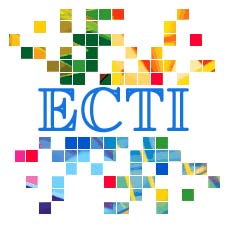Robust Digital Control for Interleaved PFC Boost Converters Using an Approximate 2DOF Current Controller
Main Article Content
Abstract
In recent years, improving power factor and reducing harmonics distortion of power supply used in electrical instruments are needed. In general, a current conduction mode boost converter is used for an active PFC (Power Factor Correction). Especially, an interleaved PFC boost converter is used to make a size compact, make an efficiency high and make a noise low. In this paper, the design method using an Approximate 2-degree-of-freedom (A2DOF) controller for a current control system and using a digital PI controller for a voltage control system is proposed. The digital PI controller is designed to enlarge the control bandwidth of the voltage control system. By this design method, the power factor can be improved more, the input current distortion can be made smaller and the output voltage regulation can also be suppressed smaller. These controllers are actually implemented on a micro- processor and are connected to the PFC converter. Experimental studies demonstrate that the combination of the digital A2DOF current controller and the digital PI voltage controller are effective. And it is shown that this combination is better than the one of usual phase lead-lag compensation controllers in the power factor, the input current distortion and the output voltage regulation.
Article Details
This journal provides immediate open access to its content on the principle that making research freely available to the public supports a greater global exchange of knowledge.
- Creative Commons Copyright License
The journal allows readers to download and share all published articles as long as they properly cite such articles; however, they cannot change them or use them commercially. This is classified as CC BY-NC-ND for the creative commons license.
- Retention of Copyright and Publishing Rights
The journal allows the authors of the published articles to hold copyrights and publishing rights without restrictions.
References
[2] M. Xie, "Digital control for power factor correction, " Unpublished master's thesis, Virginia Polytechnic Institute and State University, 2003.
[3] M. Fu and Q. Chen, "A DSP based controller for power factor correction (PFC) in a rectier circuit, " IEEE Applied Power Electron. Conf. Exposition, 2001, pp. 144-149.
[4] K. De Gusseme, D. M. Van de Sype, and J. A. A. Melkebeek, "Design issues for digital control ofboost power factor correction converters," IEEE Int. Symp. Ind. Electron., 2002, pp.731-736.
[5] W. Zhang, G. Feng, Y. Liu, and B. Wu, "A digital power factor correction (PFC) control strategy optimized for DSP," IEEE Trans. Power Electron., vol. 19, no. 6, pp.1474-1485, Nov. 2004.
[6] N. Genc, and I. Iskender, "DSP-based current sharing of average current controlled two-cell interleaved boost power factor correction converter ", IET Power Electron., vol. 4, no. 9, pp. 1015-1022, Nov. 2011.
[7] Y.-S. Kim, B.-K. Lee, and J. W. Lee, "Topology characteristics analysis and performance comparison for optimal design of high effciency PFC circuit for telecom," Proc. IEEE 33rd Int. Telecommun. Energy Conf., 2011, Oct. pp.1-7.
[8] M. Pahlevaninezhad, P. Das, J. Drobnik, G. Moschopoulos, P. K. Jain, and A. Bakhshai "A nonlinear optimal control approach based on the Control-Lyapunov Function for an AC/DC converter used in electric vehicles," IEEE Trans. Ind. Informatics, vol. 8, no. 3, pp. 596-614, Aug. 2012
[9] K. Higuchi, K. Nakano, T. Kajikawa, E. Takegami, S. Tomioka, and K. Watanabe, "A new design of robust digital controller for DCDC converters," IFAC 16th Triennial World Congress, (CD-ROM), Jul. 2005.
[10] K. Higuchi, E. Takegami, K. Nakano, T. Kajikawa, and S. Tomioka, "Digital robust control for DC-DC converter with second-order characteristics," Elect. Eng./Electron., Comput., Telecommun. Inform. Technology Conf., 2009, May. pp.161-169.
[11] Y. Ohta, K. Higuchi, and K. Chamnongthai, "Robust digital control for a PFC boost converter," Elect. Eng./Electron., Comput., Telecommun. Inform. Technology Assoc. Trans. Elect. Eng., Elect., Commun., vol.10, no.2, pp. 164-172, Aug. 2012.
[12] Y. Ohta, and K. Higuchi, "Approximate 2 degree-of-freedom digital control for a PFC boost converter," IEICE Electron. Express, vol. 10, no. 10, pp.1-8 (20130152), May 2013.
[13] S. Sasaki, and H. Watanabe, "Analysis of multiple operating points for dynamical control of switching power converters," Inst. Electron., Inform. Commun. Eng. Tech. Rep., 2005, pp.33-38.


